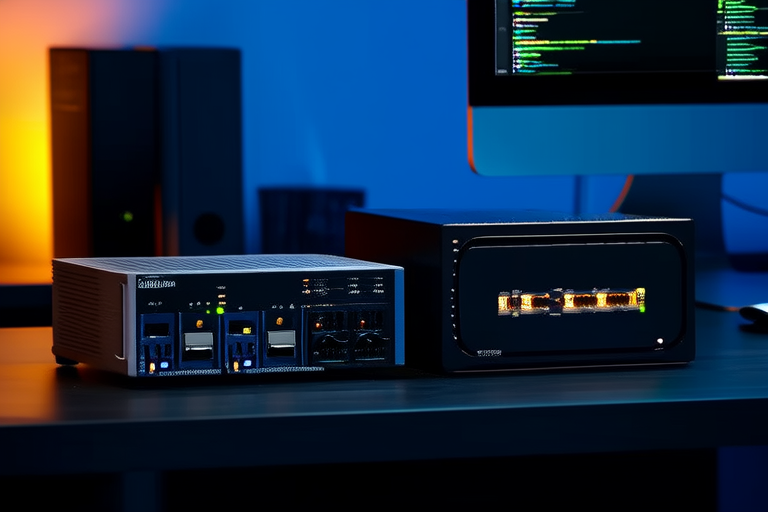“`html
How to Secure Your Home Network Against Data Breaches
Introduction
In today’s digital age, securing your home network has become more critical than ever. With the increasing reliance on internet-connected devices, home networks have become prime targets for cybercriminals. Data breaches can lead to significant personal and financial losses, compromising sensitive information such as banking details, social security numbers, and personal communications.
Common threats include malware, phishing attacks, and unauthorized access. These threats can exploit vulnerabilities in your network, leading to identity theft, financial fraud, and even physical safety risks if smart home devices are compromised. This article will guide you through essential steps to protect your home network from these threats.
Understanding Your Network
A typical home network consists of several components, including a router, modem, and various connected devices such as computers, smartphones, smart TVs, and IoT devices. Each component plays a crucial role in the overall security of your network.
The router acts as the gateway between your internal network and the internet, while the modem connects your home to your internet service provider. Connected devices can range from traditional computers and mobile phones to smart appliances and wearables. Understanding the roles and vulnerabilities of these components is the first step toward securing your network.
Vulnerabilities often arise from default settings, outdated firmware, and weak passwords. By addressing these issues proactively, you can significantly enhance your network’s security.
Basic Security Measures
Strong Passwords and WPA3 Encryption
One of the simplest yet most effective ways to secure your network is by setting strong, unique passwords for your router and all connected devices. Avoid easily guessable passwords such as “password,” “123456,” or “admin.” Instead, use a combination of letters, numbers, and special characters.
Additionally, ensure your router uses WPA3 encryption, which provides stronger protection against unauthorized access compared to older encryption protocols like WEP and WPA2.
Change Default Router Admin Credentials
Many routers come with default admin usernames and passwords. These defaults are widely known and easily exploited by attackers. Changing the default admin credentials immediately upon setup is crucial. Choose a strong password that you can remember but isn’t easily guessable.
Regular Firmware Updates
Manufacturers frequently release firmware updates to patch security vulnerabilities and improve performance. Regularly check for updates and apply them promptly. Most modern routers allow you to enable automatic updates, ensuring your device stays protected against the latest threats.
Network Segmentation
What is Network Segmentation?
Network segmentation involves dividing your network into smaller, isolated segments. This approach reduces the risk of a single breach affecting all connected devices. For example, creating a separate network for guests ensures that visitors’ devices don’t have access to your primary network.
Creating Separate Networks
To create a guest network, follow these steps:
- Log in to your router’s admin interface.
- Look for the option to create a guest network or SSID.
- Set a unique name (SSID) and password for the guest network.
- Configure the guest network to isolate it from your main network.
Isolating IoT devices is another critical aspect of network segmentation. IoT devices often lack robust security features, making them attractive targets for attackers. By placing these devices on a separate network, you minimize the risk of a breach spreading to your primary network.
Firewall Configuration
Function of Firewalls
A firewall acts as a barrier between your network and the internet, filtering incoming and outgoing traffic based on predefined rules. It helps block malicious traffic and unauthorized access attempts.
Configuring Router Firewalls
Most modern routers come with built-in firewalls. To configure these firewalls, log in to your router’s admin interface and navigate to the firewall settings. Enable the firewall and adjust the rules to suit your needs. For example, you can block specific ports or IP addresses known to be associated with malicious activity.
Third-Party Firewall Software
While router firewalls provide basic protection, third-party firewall software offers more advanced features. Consider installing firewall software on individual devices, especially those that handle sensitive information. Popular options include Windows Defender, macOS Firewall, and third-party solutions like Avast and Bitdefender.
Monitoring and Alerts
Importance of Monitoring
Continuous monitoring of your network activity is vital for detecting and responding to potential threats. Many routers offer built-in tools to monitor network usage, device connections, and bandwidth consumption. Additionally, third-party network monitoring tools can provide more detailed insights.
Setting Up Alerts
Configure alerts to notify you of unusual or suspicious activities, such as unexpected device connections, large data transfers, or failed login attempts. Many routers and monitoring tools allow you to set custom alerts based on specific criteria.
Tools and Methods for Tracking Threats
Use tools like network traffic analyzers, intrusion detection systems (IDS), and security information and event management (SIEM) systems to track network usage and potential threats. Regularly review logs and reports to identify patterns or anomalies that may indicate a security issue.
Additional Security Tips
Using Virtual Private Networks (VPNs)
A virtual private network (VPN) encrypts your internet connection, providing an additional layer of security when browsing the web. Using a trusted VPN service, especially when accessing public Wi-Fi networks, can help protect your data from interception.
Secure Wi-Fi Connections Away from Home
When connecting to public Wi-Fi, avoid transmitting sensitive information. If possible, use your mobile data plan instead. If you must use public Wi-Fi, ensure it’s a legitimate, secure connection and consider using a VPN.
Managing Smart Home Device Security
Smart home devices often come with their own security challenges. Follow the manufacturer’s guidelines for updating firmware and changing default credentials. Consider disabling remote access features unless absolutely necessary. Regularly review the permissions granted to apps and services that control your smart devices.
Conclusion
Securing your home network is an ongoing process that requires vigilance and proactive measures. By implementing strong passwords, enabling encryption, segmenting your network, configuring firewalls, and monitoring for suspicious activities, you can significantly reduce the risk of data breaches.
Stay informed about new threats and security measures. Regularly update your devices and firmware, and consider seeking professional assistance if you’re unsure about specific configurations. A well-secured home network is essential for protecting your personal and financial information, ensuring peace of mind for you and your family.
“`




